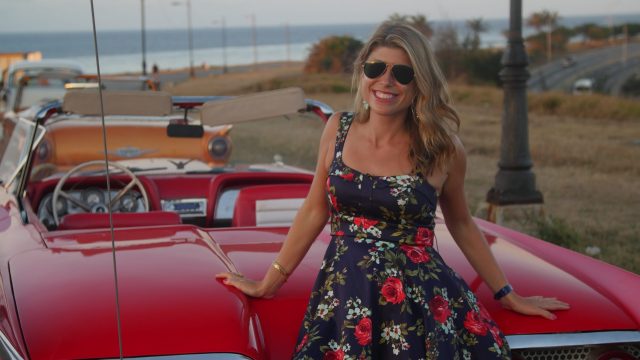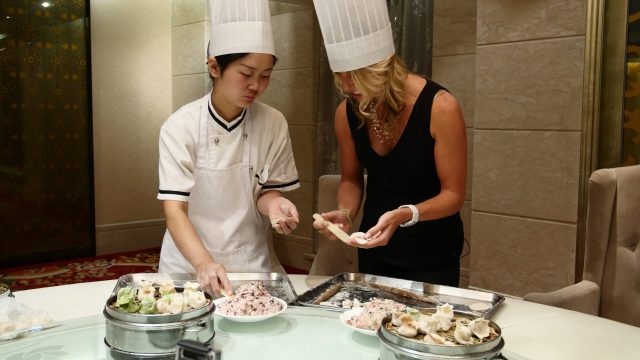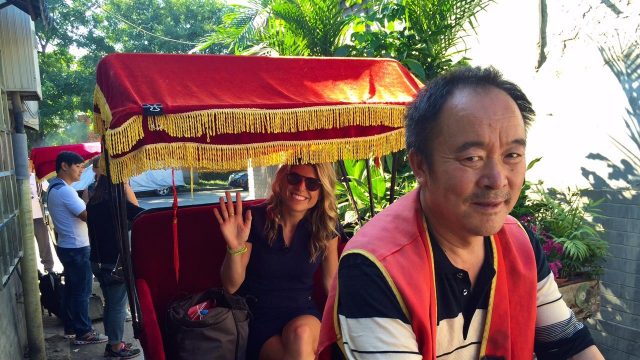
A Look Ahead: USTOA Tour Operator Members are Confident about 2016
Published on January 5, 2016
By Terry Dale, President and CEO, USTOA Happy New Year! And welcome to 2016… it’s going to be a great year to travel the world. USTOA conducts an annual travel trend and forecast survey of the association’s active tour operator members, monitoring business trends, top travel destinations, and more. The most recent results were revealed […]
Keep reading
Discover China
Published on December 1, 2015
The ancient treasures and modern wonders of China span 5,000 years of culture and history. Join Kelley Ferro, travel expert and video journalist, as she journey’s through Shanghai, Xi’an and Beijing with USTOA tour operator member Wendy Wu Tours. Catch a Glimpse of Ancient China As one of the oldest ancient civilizations, China boasts a […]
Keep reading
Traveling Through Old China a New Way
Published on November 10, 2015
By Sherry Ott, AFAR Ambassador The single burnt out speaker crackles and pops as a high-pitched voice fills the thick night air in Xi’an. Mandarin sung is just as confusing as listening to it spoken, and now it’s blaring out of a single speaker that should have been retired about 15 years ago. However, it’s […]
Keep reading
Beijing Behind Closed Doors: A Peek into the Hutong Neighborhoods
Published on November 3, 2015
By Kelley Ferro I craned my neck to look into each doorway that we passed. We were moving along at good clip on a bike taxi, or “bike rickshaw,” through the narrow streets of a Beijing neighborhood. The streets were lined with high walls and intimidating doorways. These imposing facades gave very little insight into […]
Keep readingExploring China’s Food Scene
Published on October 27, 2015
By Sherry Ott, AFAR Ambassador My first memory of international cuisine was when I was 12 years old. I’ll never forget going to a Chinese restaurant in Peoria, Illinois for the first time. It was darkly lit, with big round tables and little cups for tea. I was fascinated with these cups because they didn’t […]
Keep readingDiscover Brazil
Published on October 20, 2015
The world’s fifth largest country in both size and population, Brazil has much to offer, from beaches and mountains, to cities and nature. Join Kelley Ferro as she journeys through Brazil giving viewers a taste of the all diverse experiences encountered while on tour with a member of the United States Tour Operators Association. Videos […]
Keep readingA Day in Rio de Janeiro
Published on October 13, 2015
By Colin Roohan, AFAR Ambassador The mention of Rio conjures up images and emotions for everyone. A funky, hip, fun city, it is a mix of Mother Nature’s paradise and man-made amenities. It’s a place where coastal roads hug the huge craggy mountain faces that jut up towards the sky, and a place that throws […]
Keep readingA Wish From Brazil
Published on October 6, 2015
by Kelley Ferro “Okay, now make a wish,” said Deniza, a Bahian beauty and a press officer from Embratur (Brazilian Tourism Institute), as she tied one of three knots of a Bahia wish bracelet around my wrist. I had been familiar with a colorful Brazilian tradition of the “Lembrança do Senhor do Bonfim da Bahia” […]
Keep readingBrazil: The State of Bahia
Published on September 29, 2015
by Colin Roohan, AFAR Ambassador When I learned I would be going to Brazil with EMBRATUR and LATAM as part of AFAR’s partnership with USTOA, I was extremely excited yet a little concerned as my knowledge of the country was limited. Almost everything I knew came from a high school friend who had emigrated from […]
Keep readingDiscover Papua New Guinea
Published on September 15, 2015
Papua New Guinea is one of the last frontiers of adventure travel, providing an unparalleled array of natural beauty, exotic wildlife and cultural tradition. Join Kelley Ferro, travel expert and video journalist, as she journey’s through Papua New Guinea with USTOA tour operator Swain Destinations to discover the vibrant collection of cultural possibilities found within […]
Keep reading
